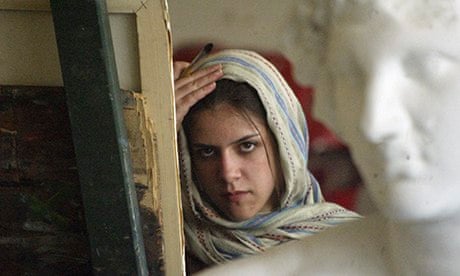At the start of the academic year in September, Iran's ministry of science, research and technology allowed about 40 students and a few teachers, previously barred from university on account of their political convictions or activities, to return to their respective establishments. It also replaced several university presidents perceived as particularly conservative with more moderate figures.
"The ministry called me to say I could enrol for a masters in geography at Tehran University," says journalist Foad Shams, who was barred from study in 2012. He was imprisoned for six months in 2009 for "propaganda against the regime" at the height of the repression following President Mahmoud Ahmadinejad's disputed re-election. Dozens of students involved in the protests were less fortunate and are still behind bars.
After sitting the entrance exam for an MA in 2012, Shams never received his marks. "An official at the science ministry told me that because of my 2009 sentence the ministry of intelligence [and security] had ordered me to be banned from studying," he adds.
According to statistics collated by student organisations since Ahmadinejad took office in 2005, 250 students were sent down. The personal records of a further 770 were marked with stars, their number indicating the severity of the sanctions inflicted on them, ranging from a warning to outright expulsion. Jafar Tofighi, appointed by President Hassan Rouhani in August as interim head of the science ministry, immediately promised to resolve the problem of "starred" students. The ministry subsequently set up a committee to receive complaints lodged by students and faculty members. In the middle of September, Tofighi announced that 400 to 500 complaints had already been received, adding that 40 students excluded in 2011-12 could enrol again.
In another move emblematic of the new government's determination to allay the political tension in universities, Tofighi sacked Sadreddin Shariati, the ultra-conservative head of Allameh Tabatabai University, the top centre for human sciences in Tehran.
Appointed by Ahmadinejad in 2005, his term of office saw many cases of harassment and the expulsion of both students and teaching staff. Shortly before he was dismissed, Shariati bragged about having introduced gender segregation in 98% of BA degree courses and all MA degree courses. His place has been taken by Hossein Salimi, who urged some former faculty members, such as the economist Farshad Momeni, to resume their work. Meanwhile, Hamid Mirzadeh has been put in charge of Iran's private universities, where millions of students are enrolled. He too promised that all the starred students would be reinstated.
Despite this encouraging news, some argue that the decisions do not go far enough. In September 175 students, former students and teachers asked the science ministry to review the cases of starred students sanctioned in 2006-10, currently not covered by the ministry's decisions. "It's still possible things may change, but I'm not optimistic," says Ali, previously enrolled on a master's in journalism at Allameh Tabatabai University and expelled in 2010.
"It all depends on how serious the changes are, whether they are real or just a farce," he adds, speaking from Tehran. Ali has submitted a request to the ministry but is still waiting for an answer.
This article appeared in the Guardian Weekly, which incorporates material from Le Monde

Comments (…)
Sign in or create your Guardian account to join the discussion